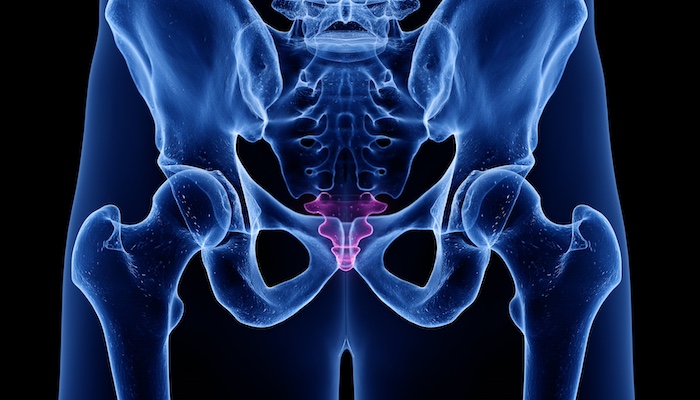
Many studies find that non-surgical treatments are successful in approximately 90% of coccydynia cases. Treatments for coccydynia are usually noninvasive and include activity modification.
Self-Care Treatment for Coccyx Pain Relief
The first line of treatment typically includes self-care that can be done without the assistance of a medical professional, such as some of the following:
Non-steroidal anti-inflammatory drugs (NSAIDs)
Common NSAIDs, such as ibuprofen (Advil), naproxen (Aleve), or COX-2 inhibitors (Celebrex), help reduce the inflammation around the coccyx that is usually a cause of the pain.
Ice or cold pack
Applying ice or a cold pack to the area several times a day for the first few days after the pain starts can help reduce inflammation, which typically occurs after injury and adds to the pain.
Heat or heating pad
Applying heat to the bottom of the spine after the first few days of pain may help relieve muscle tension, which may accompany or exacerbate coccyx pain. Common heat sources include a hot water bottle, chemical heat pack, long-lasting adhesive heat strip, or hot bath (as long as weight is kept off the tailbone in the
Activity modification
Alterations to everyday activities can help take cumulative pressure off the tailbone and alleviate pain. These activity modifications may include using a standing desk to avoid prolonged sitting, using a pillow to take the weight off the coccyx, or adjusting posture so weight is taken off the tailbone when sitting.
Supportive pillows
A custom pillow that takes pressure off the coccyx when sitting may be used. Pillows for alleviating coccydynia may include U- or V-shaped pillows, or wedge-shaped pillows with a cutout or hole where the tailbone is. Any pillow or sitting arrangement that keeps pressure off the coccyx is ideal and largely a matter of personal preference. A supportive cushion can be useful in the car, as well as in an office, classroom, or at home.
Dietary changes
If tailbone pain is caused by or worsened by bowel movements or constipation, increased fiber and water intake and stool softeners are recommended.
If the above treatments do not help manage or alleviate coccyx pain, additional therapies may be necessary by a doctor, chiropractor, or other medical professional.
Non-Surgical Treatments for Coccydynia
If tailbone pain is persistent or severe, additional non-surgical treatment options for coccydynia may include:
Injection
An injection of a numbing agent (lidocaine) and a steroid (to decrease inflammation) in the area surrounding the coccyx may provide pain relief. The physician uses imaging guidance to ensure that the injection is administered to the correclocationea. Pain relief can last from 1 week up to several years. If the first injection is effective, patients may receive up to 3 injections annually.
Manual manipulation
Some patients find pain relief through manual manipulation of the coccyx. The joint between the sacrum and the coccyx can be adjusted through manual manipulation, potentially reducing pain caused by inadequate coccyx mobility.
Massage
Coccydynia may be reduced or alleviated by massaging tense pelvic floor muscles attached to the coccyx. Tense muscles in this region can place added strain on the ligaments and sacrococcygeal joint, limiting its mobility or pulling on the coccyx.
Stretching
Gently stretching the ligaments attached to the coccyx can help reduce muscle tension in the coccygeal area. A physical therapist, chiropractor, physiatrist, or other appropriately trained healthcare practitioner can instruct on appropriate stretches to relieve coccyx pain.
TENS unit
Transcutaneous Electrical Nerve Stimulator (TENS) units apply electric stimulation that interferes with the transmission of pain signals from the coccyx to the brain. These devices can be a good option for patients who wish to keep their intake of medications to a minimum. There are many varieties of TENS units, with some using high-frequency stimulation that are worn for short periods, and others using low-frequency stimulation that may be worn longer.
After attaining sufficient pain relief so movement is better tolerated, daily low-impact aerobic activity is beneficial, as the increased blood flow brings nutrients to the area and encourages the body’s natural healing abilities. An additional benefit of aerobic activity is the release of endorphins, the body’s innate pain-relieving chemicals.
If non-surgical treatments or pain management methods are effective, prolonged use of these methods is a reasonable treatment option. In rare cases, a patient’s pain does not respond to non-surgical treatments, and surgery on the coccyx may be considered.
Precision Pain Care and Rehabilitation has two convenient locations in Richmond Hill – Queens, and New Hyde Park – Long Island. Call the Queens office at (718) 215-1888 or (516) 419-4480 for the Long Island office to arrange an appointment with our Interventional Pain Management Specialists, Dr. Jeffrey Chacko or Dr. Sonny Ahluwalia.















